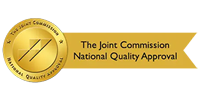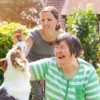It is impossible for young people to avoid feeling overwhelmed, anxious, and upset, at times, but when those emotions become debilitating, he or she may be struggling with more than just typical teenage angst. Depression, clinically referred to as major depressive disorder (MDD), is listed in the Diagnostic and Statistical Manual of Mental Disorders, Fifth Edition (DSM-5).
It is characterized by persistent sadness and a lack of interest or pleasure in previously rewarding or enjoyable activities resulting in significant impairment in daily life.
Although depression can develop at any age, symptoms commonly surface in adolescence and young adulthood. Findings from the National Institute of Mental Health in 2017, report nearly 3.2 million adolescents between the ages of 12 to 17 had experienced at least one major depressive episode. Further, MDD is recognized as one of the most common mental health illnesses that teenagers experience.
Behavioral Activation
Behavioral activation (BA) is defined as “an empirically based psychotherapy for depression that improves systems by increasing a client’s contact with sources of positive reinforcement by making behavioral changes.” It was initially developed in the 1970s by Peter M. Lewinsohn and colleagues who viewed depression as a behavioral issue rather than a cognitive issue, arising from a lack of positive reinforcement, particularly in social relationships. Hence, they believed that the most effective method of treatment for depression was to “restore an adequate schedule of positive reinforcement for the individual by changing the patient’s behavior and/ or the environment.” Behavioral activation is more thoroughly explained as “a structured, brief psychotherapeutic approach that aims to (a) increase engagement in adaptive activities (which often are those associated with the experience of pleasure or mastery), (b) decrease engagement in activities that maintain depression or increase risk for depression, and (c) solve problems that limit access to reward or that maintain or increase aversive control.” There are a variety of techniques used in behavioral activation with teenagers struggling with depression, including but not limited to the following examples:
- Self-monitoring of activities and mood
- Activity scheduling
- Activity structuring
- Problem-solving
- Social skill training
- Hierarchy construction (ranking how easy certain activities are to accomplish)
- Shaping (training healthy behaviors)
- Reward
- Persuasion
- Behavior contract (signing a contract with friends and family so that they will only reinforce healthy behaviors)
- Life area assessment
Behavioral activation is a behavioral treatment that targets patterns of avoidance and cultivates opportunities for positive reinforcement. It focuses on behavioral changes in a young person’s daily life to increase positive awareness. Teenagers are encouraged to develop personal short, medium, and long-term goals to minimize behaviors that feed into depression.
Further Information and Support
For most of us, life can be very stressful, leading us to feel emotionally charged, which can cause anxiety, panic attacks, depression, and getting stuck in a cycle of being burdened with negative thoughts. Navigating through the challenges and emotional turmoil of life can be overwhelming, but you do not have to go through it alone. Engage Treatment is a Joint Commission Accredited professional psychological practice. We specialize in treating children, teens, and young adults struggling with depression and anxiety through community-focused treatment plans that incorporate a carefully selected combination of therapeutic interventions. Our compassionate, multidisciplinary practitioners are devoted to providing the highest quality of care that helps ignite positive change and enables clients to reach optimal health and well-being. Please do not hesitate to reach out for guidance. We are happy to answer questions and provide you with any additional information. Feel free to call us at 805-497-0605 or email us at [email protected]. You are also welcomed to get in touch by filling out our contact form. We look forward to connecting and having the opportunity to discuss how we might best be able to support you.
Contact Us
Westlake Campus:
IOP Program
2625 Townsgate Road, Suite 210
Westlake Village, California 91361
Agoura Campus:
Private Therapy & Parenting Program
30300 Agoura Road, Suite 250
Agoura Hills, CA 91301
805-497-0605
805-371-4862











© 2023 Engage Treatment Program, Inc. All Rights Reserved.
LGBTQ Friendly
About
• About Engage
• Our Team
• Career Opportunities
• Individual / Family Therapy






